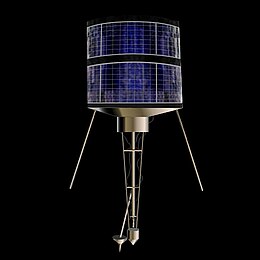|
Kosmos 2251
Kosmos-2251 (Russian: Космос-2251 meaning Cosmos 2251) was a Russian Strela-2M military communications satellite. It was launched into Low Earth orbit from Site 132/1 at the Plesetsk Cosmodrome at 04:17 UTC on 16 June 1993, by a Kosmos-3M carrier rocket.[3][4] The Strela satellites had a lifespan of 5 years, and the Russian government reported that Kosmos-2251 ceased functioning in 1995.[5] Russia was later criticised by The Space Review for leaving a defunct satellite in a congested orbit, rather than deorbiting it. In response, Russia noted that they were (and are)[6] not required to do so under international law.[7][8] In any case, the KAUR-1 satellites had no propulsion system, which is usually required for deorbiting.[9][10] DestructionAt 16:56 UTC on 10 February 2009,[11] it collided with Iridium 33 (1997-051C), an Iridium satellite,[12] in the first major collision of two satellites in Earth orbit. The Iridium satellite, which was operational at the time of the collision, was destroyed, as was Kosmos-2251.[13] NASA reported that a large amount of debris was produced by the collision.[14][15] See alsoReferences
Wikinews has news coverage of the 2009 satellite collision:
|
||||||||||||||||||||||||||||||||||||||||||||||||||||||||||||||
Portal di Ensiklopedia Dunia
